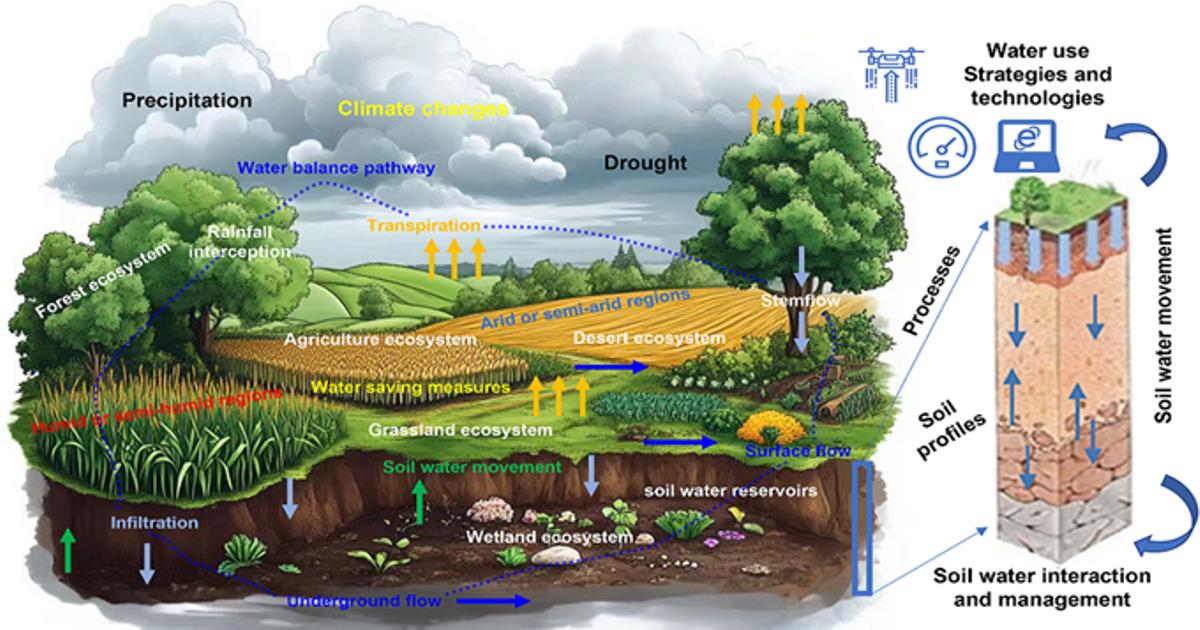Soil–Water Interaction and Management
A special issue of Water (ISSN 2073-4441). This special issue belongs to the section "Soil and Water".
Deadline for manuscript submissions: closed (31 October 2025) | Viewed by 6734

Special Issue Editors
Interests: natural resource management; land space big data science; low-carbon development and carbon neutrality
Special Issue Information
Dear Colleagues,
We are pleased to announce a new Special Issue of Water (IF2023=3.0; ISSN, 2073-4441), entitled “Soil–Water Interaction and Management”. This Special Issue invites the submission of original research papers focused on the circulation, transformation, balance, and management of soil moisture, rock moisture, groundwater, plant water, surface water, and atmospheric water in agriculture, grasslands, forests, and wetlands.
Soil–water interaction is a critical aspect of environmental science, agriculture, and land management. It involves understanding how water moves through soil, how it influences soil properties, and how both water and soil management practices affect plant growth and ecosystem health. Effective soil–water interaction and management are essential for sustainable agriculture, environmental protection, and resource conservation. By understanding the dynamics of soil and water, stakeholders can make informed decisions on how to enhance productivity while preserving natural resources.
This Special Issue’s topics of interest include, but are not limited to, the following:
(i) Changes in soil–water movement and management strategies throughout the earth’s critical zone under different ecosystems (e.g. agriculture, grasslands, forests, and wetlands).
(ii) Effects and management patterns of soil moisture on carbon cycle, microbial diversity, and animal abundance.
(iii) Soil moisture changes by land use conversion or field research using long-term observations.
(iv) The role of soil–water management in ecosystem services, including its effects on biodiversity, soil fertility, and water quality.
(v) Impact of climate change on soil–water dynamics and distribution in various regions, as well as corresponding management strategies.
We welcome the submission of original research articles, review papers, and case studies aimed at advancing scientific exploration and practical innovation in the field of soil–water management. We look forward to collaborating with you on this important topic.
Prof. Dr. Fu Chen
Dr. Zhanbin Luo
Guest Editors
Manuscript Submission Information
Manuscripts should be submitted online at www.mdpi.com by registering and logging in to this website. Once you are registered, click here to go to the submission form. Manuscripts can be submitted until the deadline. All submissions that pass pre-check are peer-reviewed. Accepted papers will be published continuously in the journal (as soon as accepted) and will be listed together on the special issue website. Research articles, review articles as well as short communications are invited. For planned papers, a title and short abstract (about 250 words) can be sent to the Editorial Office for assessment.
Submitted manuscripts should not have been published previously, nor be under consideration for publication elsewhere (except conference proceedings papers). All manuscripts are thoroughly refereed through a single-blind peer-review process. A guide for authors and other relevant information for submission of manuscripts is available on the Instructions for Authors page. Water is an international peer-reviewed open access semimonthly journal published by MDPI.
Please visit the Instructions for Authors page before submitting a manuscript. The Article Processing Charge (APC) for publication in this open access journal is 2600 CHF (Swiss Francs). Submitted papers should be well formatted and use good English. Authors may use MDPI's English editing service prior to publication or during author revisions.
Keywords
- soil moisture
- soil–water management
- irrigation systems
- drought conditions
- climate change
Benefits of Publishing in a Special Issue
- Ease of navigation: Grouping papers by topic helps scholars navigate broad scope journals more efficiently.
- Greater discoverability: Special Issues support the reach and impact of scientific research. Articles in Special Issues are more discoverable and cited more frequently.
- Expansion of research network: Special Issues facilitate connections among authors, fostering scientific collaborations.
- External promotion: Articles in Special Issues are often promoted through the journal's social media, increasing their visibility.
- Reprint: MDPI Books provides the opportunity to republish successful Special Issues in book format, both online and in print.
Further information on MDPI's Special Issue policies can be found here.






